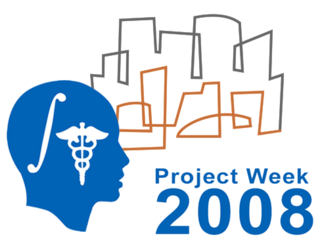Difference between revisions of "DBP2:MIND:BeyondLesionsProject"
Hjbockholt (talk | contribs) (New page: {| |thumb|320px|Return to [[2008_Summer_Project_Week|Project Week Main Page ]] |[[Image:genuFAp.jpg|thumb|320px|Scatter plot of the original FA data through ...) |
|||
| (8 intermediate revisions by one other user not shown) | |||
| Line 1: | Line 1: | ||
{| | {| | ||
|[[Image:ProjectWeek-2008.png|thumb|320px|Return to [[2008_Summer_Project_Week|Project Week Main Page]] ]] | |[[Image:ProjectWeek-2008.png|thumb|320px|Return to [[2008_Summer_Project_Week|Project Week Main Page]] ]] | ||
| − | |||
| − | |||
|} | |} | ||
| Line 8: | Line 6: | ||
__NOTOC__ | __NOTOC__ | ||
| − | + | ||
| − | |||
| − | |||
| − | |||
| − | |||
| − | |||
===Key Investigators=== | ===Key Investigators=== | ||
| − | * | + | *H. Jeremy Bockholt |
| − | * | + | *Mark Scully |
| + | *Ross Whitaker | ||
| + | *Steve Pieper | ||
| + | *Vincent Magnotta | ||
| + | *Guido Gerig | ||
| Line 25: | Line 22: | ||
<h1>Objective</h1> | <h1>Objective</h1> | ||
| − | + | Going beyond classification of crisp boundaries of lesion hyperintensities on FLAIR, how can DTI be incorporated to investigate diffuse lesions. | |
| − | + | Determine the requirements for potentially looking at white matter intensity abnormalities that may not manifest themselves as "classic lesions" | |
| + | Set up a framework for testing lower FA and higher MD in lupus versus healthy normal volunteers | ||
</div> | </div> | ||
| Line 34: | Line 32: | ||
<h1>Approach, Plan</h1> | <h1>Approach, Plan</h1> | ||
| − | + | Map out a strategy and timeline with concrete deliverables for use of DTI scalars. | |
| + | Can FA/MD maps contribute favourably to lesion classification or do these maps demonstrate more diffuse white matter abnormalities at and around lesions as identified on FLAIR. | ||
| + | |||
| + | Set up and run analysis of 42 patients/controls (15 with lesions) to determine if the study replicates lowered FA and highered MD in white matter lesion regions. | ||
| + | |||
| + | |||
| − | |||
</div> | </div> | ||
| Line 42: | Line 44: | ||
<h1>Progress</h1> | <h1>Progress</h1> | ||
| + | This project was more of a planning session this week. | ||
| − | + | Met with Nathan Hageman and discussed some possible approaches to using the scalars, but also potentially using the full eigen-system to analyze multi-direction diffusion. | |
| + | |||
| + | Introduced to the DTI visualization and analysis capabilities of Slicer along with Nathan's DTI analysis tools. | ||
</div> | </div> | ||
| Line 50: | Line 55: | ||
</div> | </div> | ||
| − | |||
===References=== | ===References=== | ||
| − | |||
| − | |||
| − | |||
| − | |||
Latest revision as of 13:50, 27 June 2008
Home < DBP2:MIND:BeyondLesionsProject Return to Project Week Main Page |
Key Investigators
- H. Jeremy Bockholt
- Mark Scully
- Ross Whitaker
- Steve Pieper
- Vincent Magnotta
- Guido Gerig
Objective
Going beyond classification of crisp boundaries of lesion hyperintensities on FLAIR, how can DTI be incorporated to investigate diffuse lesions. Determine the requirements for potentially looking at white matter intensity abnormalities that may not manifest themselves as "classic lesions" Set up a framework for testing lower FA and higher MD in lupus versus healthy normal volunteers
Approach, Plan
Map out a strategy and timeline with concrete deliverables for use of DTI scalars. Can FA/MD maps contribute favourably to lesion classification or do these maps demonstrate more diffuse white matter abnormalities at and around lesions as identified on FLAIR.
Set up and run analysis of 42 patients/controls (15 with lesions) to determine if the study replicates lowered FA and highered MD in white matter lesion regions.
Progress
This project was more of a planning session this week.
Met with Nathan Hageman and discussed some possible approaches to using the scalars, but also potentially using the full eigen-system to analyze multi-direction diffusion.
Introduced to the DTI visualization and analysis capabilities of Slicer along with Nathan's DTI analysis tools.